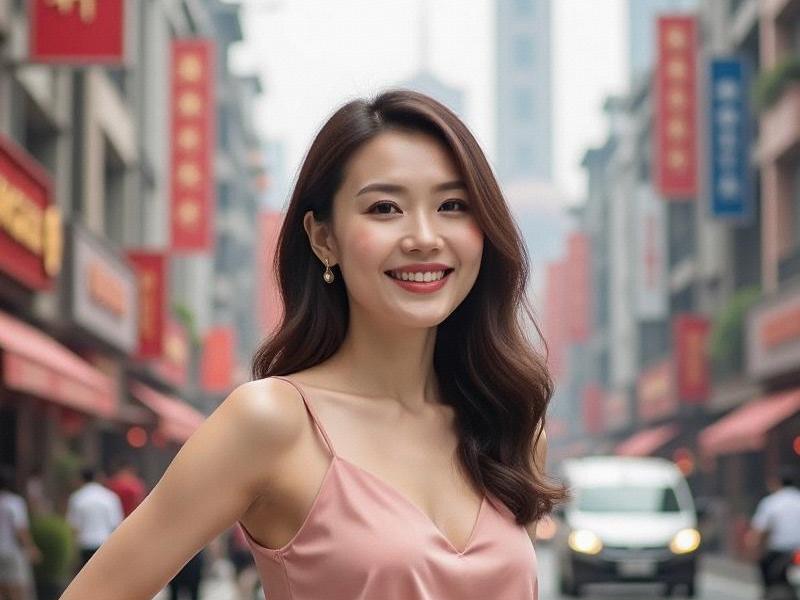The Reinvention of Shanghai's Nightlife: How Entertainment Clubs Are Redefining Urban Leisure
⏱ 2025-06-09 01:03 🔖 上海品茶工作室
📢0℃

[The New Shanghai Club Culture]
At 9:30 PM in the Huangpu District, the neon-lit entrance of "Cloud Nine" welcomes a mix of local entrepreneurs and international executives - its understated luxury reflecting Shanghai's transformed entertainment landscape. Gone are the gaudy interiors of old; today's premium clubs emphasize refined aesthetics, curated experiences, and what industry insiders call "discretionary entertainment."
[Historical Evolution]
1. 1990s: The Karaoke Revolution
- First Japanese-style KTV parlors
- Private room concept introduction
- Business entertainment staple
2. 2000s: Luxury Boom Era
- Champagne rooms and VIP services
- Celebrity-owned venues
- International chain expansion
3. 2010s: Regulatory Reforms
- Anti-extravagance campaign impacts
- Shift toward subtle sophistication
- Experience over ostentation
4. 2020s: The New Premium
- Cultural hybrid concepts
- Technology-integrated venues
- Membership ecosystems
爱上海最新论坛 [Market Segmentation]
Current club categories:
1. Business Entertainment Hubs
- Soundproofed meeting rooms with KTV
- Translation services available
- Corporate account systems
2. Cultural Fusion Spaces
- Jazz-KTV hybrid venues
- Traditional tea ceremony lounges
- Calligraphy performance nights
3. High-Tech Clubs
- AI song recommendation systems
- Augmented reality room themes
- Voice optimization technology
4. Niche Concept Venues
- Vintage 1930s Shanghai style
- Millennial-focused mini-clubs
- Wellness-oriented sound lounges
[Economic Impact]
上海龙凤419手机 Key industry statistics:
- ¥48 billion annual revenue
- 12% year-on-year growth
- 3,200 licensed establishments
- 85,000 direct employees
[Design Innovations]
Signature features:
1. Acoustical engineering
- Studio-grade soundproofing
- 3D audio systems
- Voice enhancement tech
2. Cultural aesthetics
- Modernized Art Deco
- Neo-Chinese contemporary
- Biophilic design elements
3. Service evolution
- Multilingual hosts
- Digital concierge tablets
- Cultural protocol training
上海私人品茶 [Regulatory Environment]
Current framework:
1. Strict licensing system
2. Mandatory closing times
3. Alcohol service regulations
4. Fire safety requirements
[Global Comparisons]
How Shanghai differs from:
- Tokyo's host club culture
- Seoul's noraebang tradition
- Las Vegas nightclub model
- Bangkok's entertainment zones
[Future Trends]
Emerging developments:
1. Membership blockchain systems
2. Virtual reality extensions
3. Sustainable operations
4. Health-conscious offerings
[Conclusion]
As hospitality analyst Miranda Zhou observes: "Shanghai's clubs aren't just surviving regulatory changes - they're leading a renaissance in socially acceptable premium entertainment. Their secret? Transforming what was once seen as indulgence into culturally-rooted business sophistication."
Shanghai 2040: Where Futurism and Heritage Collide in China's Global MegacityShanghai 2040: How China's Global City Is Reinventing Urban LivingThe Phoenix of the East: How Shanghai is Reinventing Global Cultural InfluenceShanghai's Green Transformation: Pioneering Sustainable Urban Development in the 21st Century【摩登密码】从月份牌到元宇宙:上海女性审美百年流变录Shanghai's Vibrant Lifestyle, from Historical Pedigree to a Global Metropolis【特别调查】"共饮一江水:长三角生态绿色一体化发展示范区三年成效报告"【摩登密码】从石库门到元宇宙:上海女性的百年形象革命Shanghai’s Digital Elegance: Where Tradition Meets Tomorrow’s Frontier in BeautyShanghai's Nightlife Evolution: How Luxury Entertainment Clubs Are Redefining Urban Social Culture
海派烟火眉:上海美女的市井诗行与精神注脚《霓虹深处:南京东路百年商业街的进化论》《百乐门到元宇宙:上海娱乐会所进化论》霓虹与檀香:上海高端会所三十年文化流变"四段式模板
7. 历史参考:前两篇分别以"感官革命"和"时空折叠"为切入点,本次需创新视角
8. 时效元素:当前为2025年,可融入AI、元宇宙等现代科技元素
9. 价值导向:展现独立、智慧的当代上海女性形象,规避物化倾向
以下是符合要求的深度特稿:《梧桐树下的方程式:95后女科学家与旗袍实验室的双城记》《石库门密码:上海里弄建筑的时空折叠》《石库门里的时光标本》《梧桐树下的城市镜像》梧桐区镜像:上海女性的空间叙事与身份建构
空间修辞,身体政治,时尚语法,记忆拓扑,社群算法

